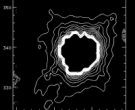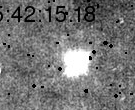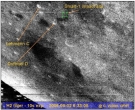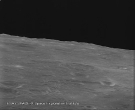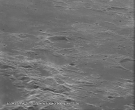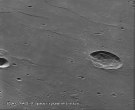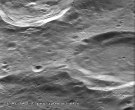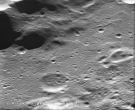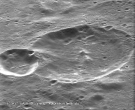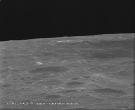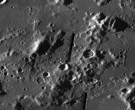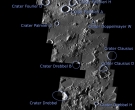Results from Observations
Overview
The SMART-1 Lunar Impact is being observed across the electromagnetic spectrum with input expected from radio, infrared and optical observatories from around the globe.
3 September - 14:06 UT
- Radio - summary of actvities has been added
- Optical - AMIE images from 2 September
3 September - 08:06 UT
An Infrared image around the moment of impact has been captured by the CFHT team.
3 September - 05:13 UT
The following details have been uploaded:
- Optical - Mosaic of AMIE images of the impact region
3 September - 02:39 UT
The following details have been uploaded:
- Optical - SMART-1 star tracker video of lunar surface
- Infrared - CFHT images of lunar surface from 2 September
Radio
SMART-1 was also observed by a network of five cooperating radio telescopes over several months leading up to Moon impact. The observatories' activities are coordinated by the Joint Institute for Very Long Baseline Interferometry (JIVE), hosted by ASTRON (the Netherlands Foundation for Research in Astronomy), Dwingeloo, The Netherlands.
The participating observatories are capable of making highly sensitive observations, characterized by very accurate timing and the ability to detect very weak radio signals.
Starting in the spring of 2006, the cooperating telescopes observed radio signals emitted by SMART-1 and reflected from the Moon as part of a programme to test and validate the very long baseline interferometry (VLBI) technique. VLBI allows ground-based telescopes to track spacecraft with very high accuracy, and furthermore has applications in radio astronomy, including the testing of radio wave propagation in the vicinity of massive bodies like the Moon and the study of the Moon's surface physical properties.
In working with SMART-1, the radio telescopes applied the same techniques used by ground telescopes to track the descent of ESA's Huygens probe to the surface of Saturn's moon Titan in January 2005. This technique is also expected to be used in tracking China's Chang'e-series of Moon missions, to be launched starting in 2007.
Infrared
Click on the tumbnail to view the full image and caption.
3 September 2006
2 September 2006
Optical
Click on the tumbnail to view the full image and caption.
3 September 2006
2 September 2006

